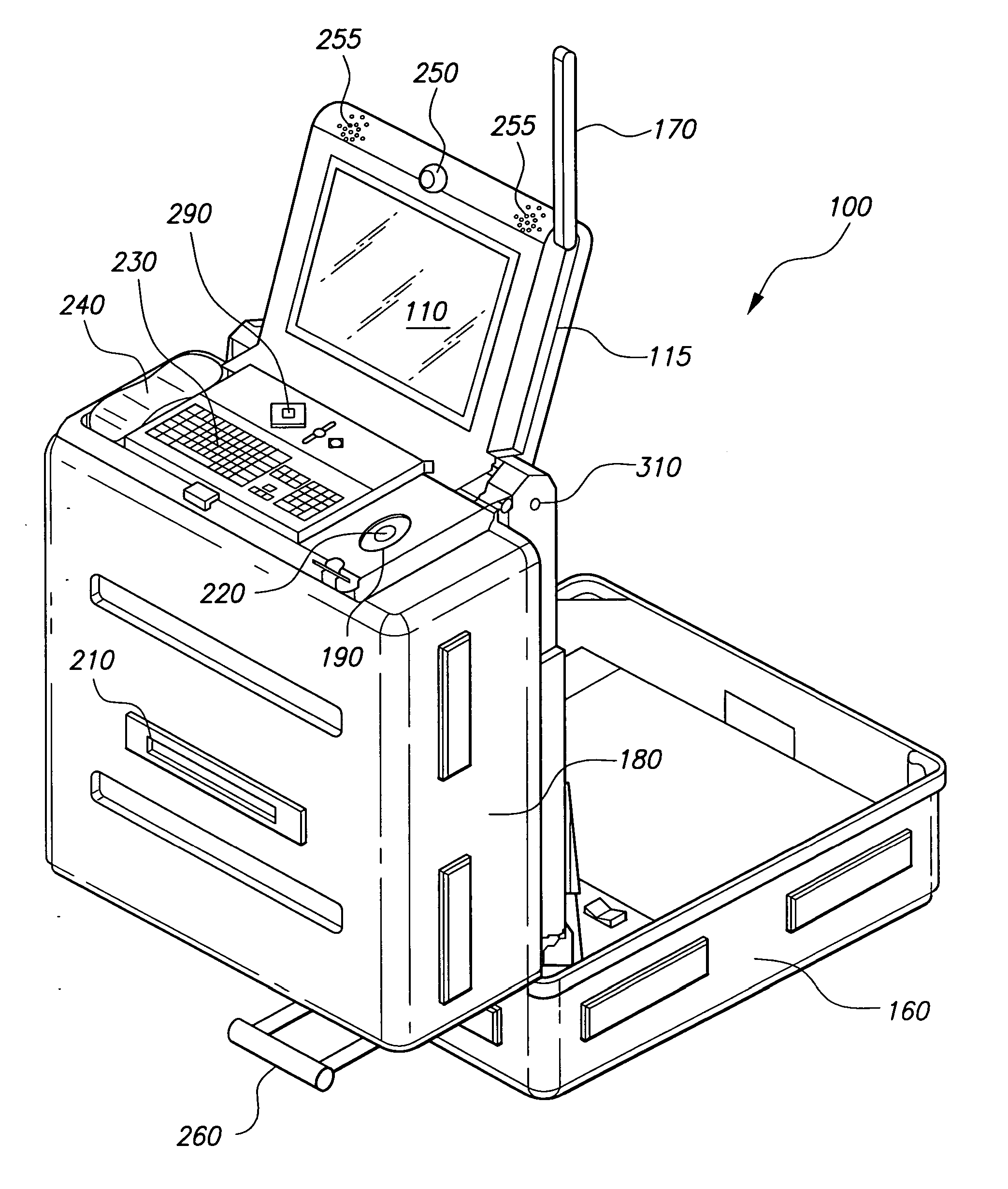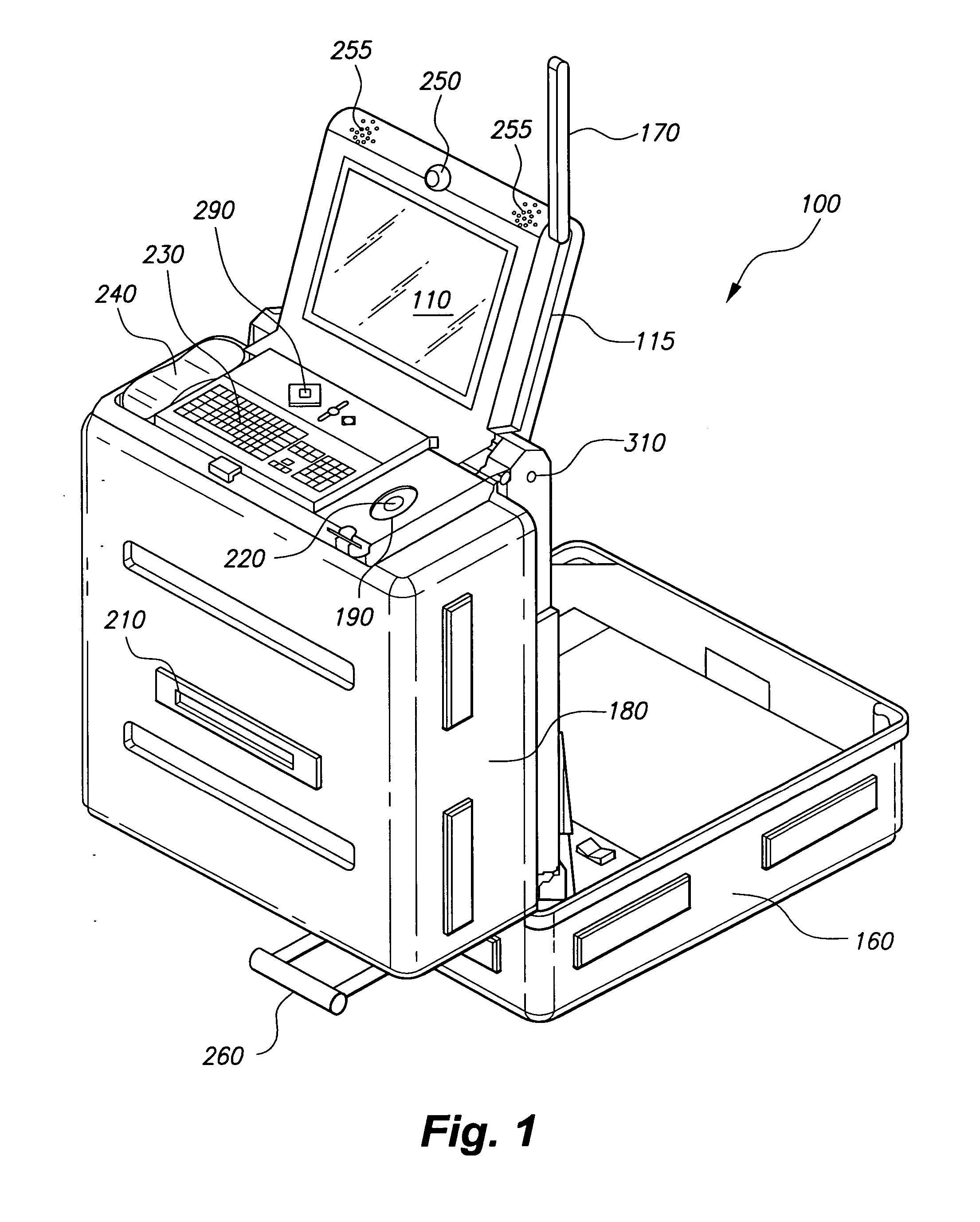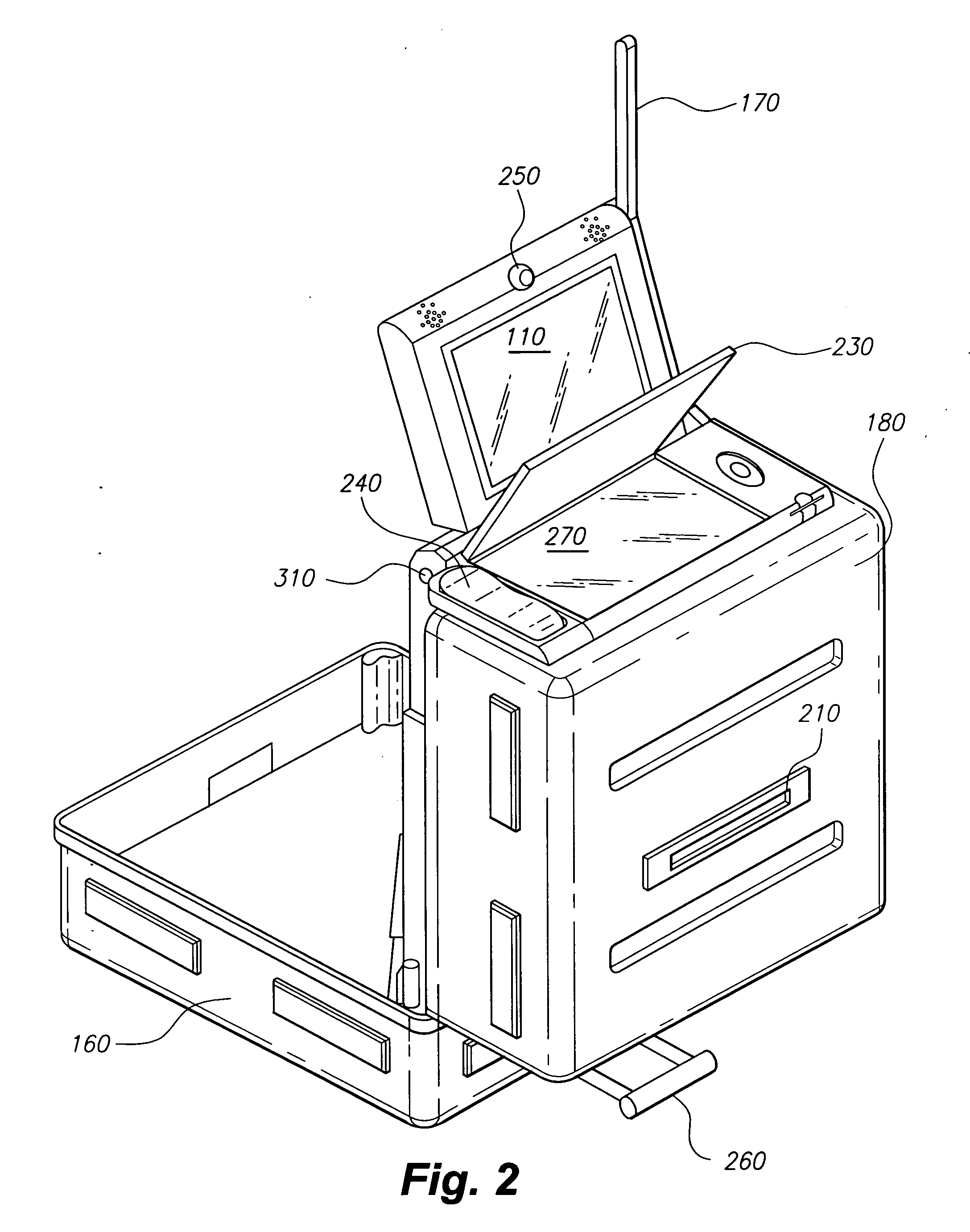Rapid depolyment portable interactive kiosk
a kiosk and interactive technology, applied in the field of portable kiosks, can solve the problems of inability to intuitively use or setup difficulty in accessing the emergency site, and the manpower required to deliver, setup and operate these types of mobile response units, etc., and achieve the effect of not requiring much skill or time, easy folding and easy folding
- Summary
- Abstract
- Description
- Claims
- Application Information
AI Technical Summary
Benefits of technology
Problems solved by technology
Method used
Image
Examples
Embodiment Construction
[0037] Turning to the figures, FIG. 1 illustrates the Rapid Deployment Portable Interactive Kiosk (RPPiK) 100 according to the principles of the present invention. The kiosk 100 in FIG. 1 is in a fully deployed position. As illustrated in FIG. 1, keyboard 230 is disposed 35 inches off the ground. Keyboard 230 is preferably a spill proof keyboard. Behind keyboard 230 is an EZ Access™ section 508 ADA compliant interface 290 enabling persons with limited hand use and / or limited or no vision to use the kiosk. To the left of keyboard 230 is a telephone handset 240. Telephone handset 240 has a volume control and has a jack for a headset. The telephone handset 240 along with the other features of the kiosk can enable the user to command and control teams of people in an emergency. To the right of keyboard 230 is biometric ID 220. Biometric ID 220 is a fingerprint scanner that is used to either grant or deny access of certain persons to the kiosk. The biometric ID 220 can provide usage auth...
PUM
 Login to View More
Login to View More Abstract
Description
Claims
Application Information
 Login to View More
Login to View More - R&D
- Intellectual Property
- Life Sciences
- Materials
- Tech Scout
- Unparalleled Data Quality
- Higher Quality Content
- 60% Fewer Hallucinations
Browse by: Latest US Patents, China's latest patents, Technical Efficacy Thesaurus, Application Domain, Technology Topic, Popular Technical Reports.
© 2025 PatSnap. All rights reserved.Legal|Privacy policy|Modern Slavery Act Transparency Statement|Sitemap|About US| Contact US: help@patsnap.com



